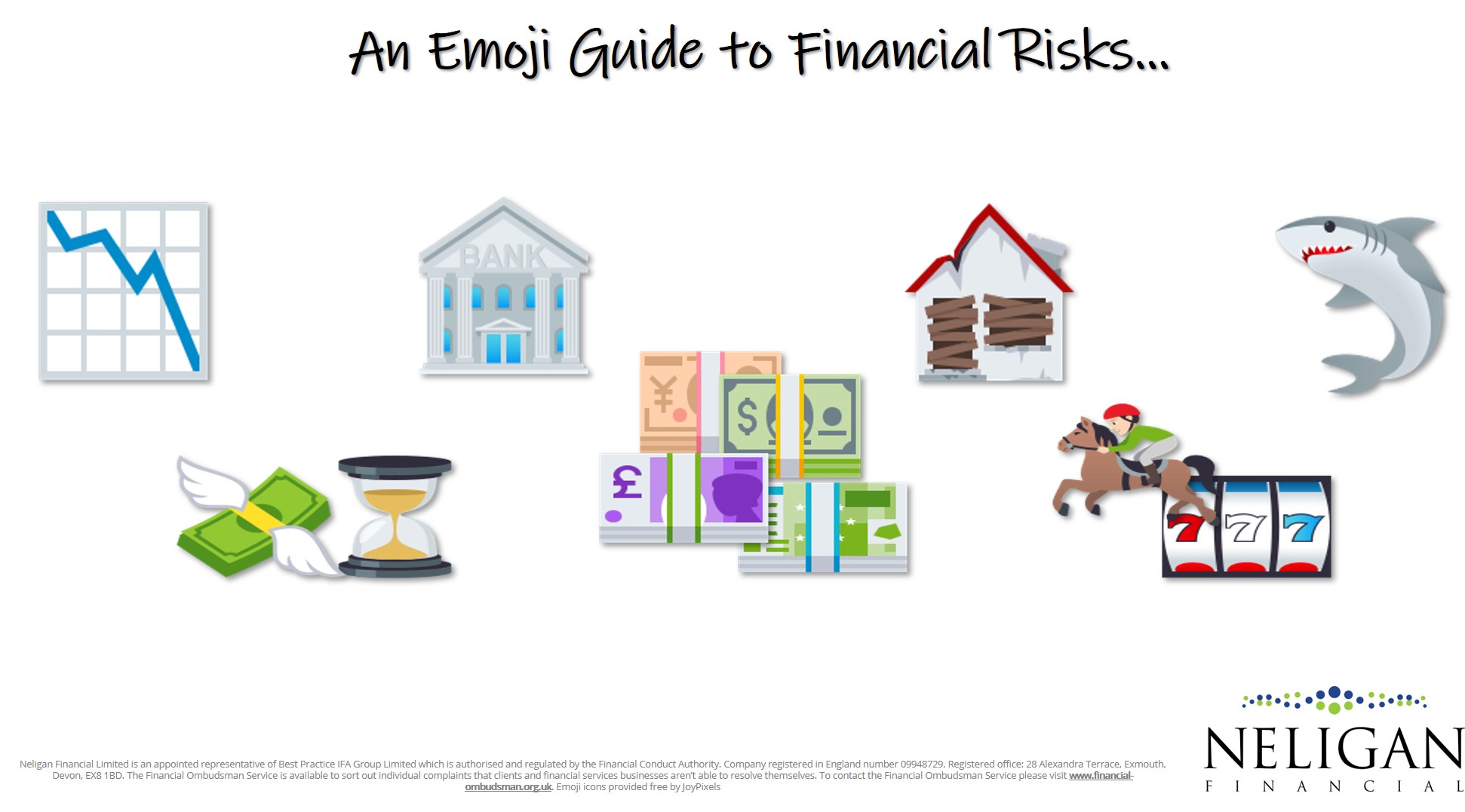
I was asked this question during a recent review meeting with a client. The point being that we are living in a period of high inflation but once that reverts to normal, in reality inflation is still an annual increase. For example, if inflation is 10% this year but only, say, 3% next year that is still a 13% increase compared to two years ago.
If you are living on a fixed income or having to draw from savings it is going to be harder to manage.
The simple reality is that, yes, goods and services tend to get more expensive over time. An item costing £10 ten years ago would now cost you £11.94.
But think about economics 101…
My university economics lecturer had a strong Chinese accent which made him hard to understand but even more so when the lectures were at 9am the morning after a popular student night. What I do remember from that course was the relationship between supply, demand and prices.
If the supply of widgets is greater than the demand for those widgets prices come down. Because you need to reduce prices to try and sell them.
If the supply of widgets is less than demand prices go up. Because you can charge a premium price when there is scarcity. Which is exactly what we are seeing with, well, pretty much everything at present.
The balance will flip
The chart below from the RAC shows average petrol prices over time.
Do you remember how low petrol prices were during the COVID lockdowns? Frustratingly we couldn’t make the most of the low prices but that is the point of the supply and demand relationship.
They hit a lower price in 2016 following a fall in the price of Brent Crude and supermarkets competing for shoppers by reducing their forecourt prices.
When Putin has his comeuppance global energy supply will revert to normal so we will see costs fall back.
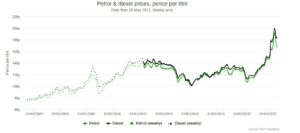
And this chart from Cliffordtalbort.co.uk shows the change in the price of oil, gas and electricity since 2004.
The price of oil is much more variable but does fall back after periods of higher prices.
Gas and electricity have been much lower and more stable over the past 18 years. Largely helped by a benign geo-political environment until this year.
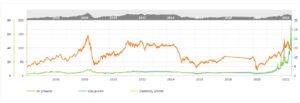
Food, the other big influence on the spike in inflation is also heavily influenced by global supply and demand. As the chart below from tradingeconomics.com shows prices do go down as well as up, again helped largely by supermarket price wars.
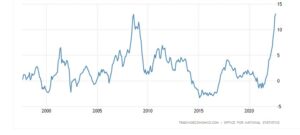
Clothing, another area of high consumer demand, also shows long-term price falls as the chart from Statista.com below shows.
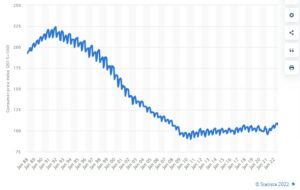
Think also about how the evolution of technology and the internet has impacted the costs of products we buy. Amazon has changed the rules of the game and forced retailers in most consumer markets to compete on price or change their offerings.
Globalisation has provided consumers with significantly more choice than we had 20 years ago and with choice we have buyer power, another dampener of prices.
It also means we are also more greatly affected when pandemics and wars create disruption but to answer the initial question, I do believe we will see prices come down again to sustainable levels.
Not forgetting though, a sinister side of globalisation: climate change which is a problem that we can’t bury our head in the sand about.
Photo by Karolina Grabowska: https://www.pexels.com/photo/push-cart-and-a-white-paperbag-5632402/

